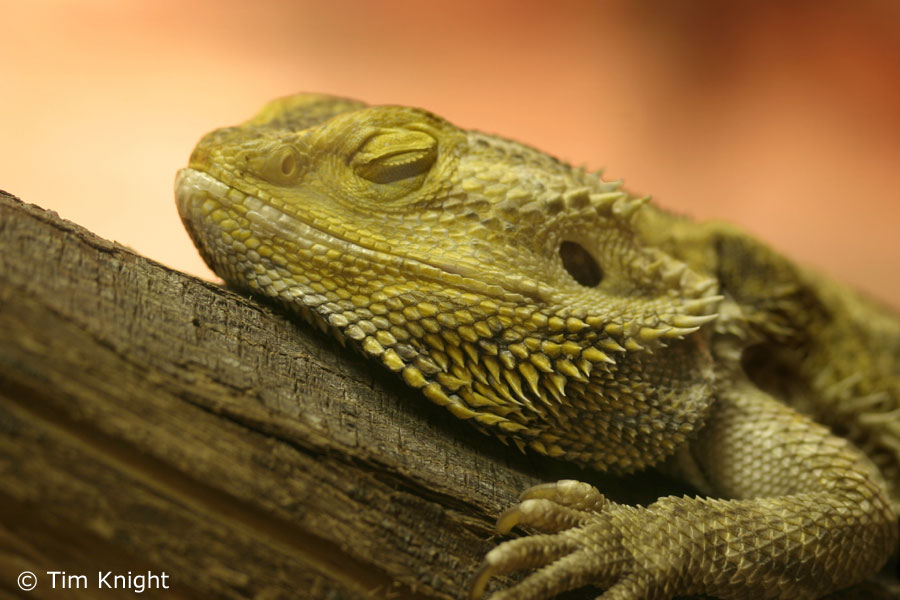Silk Bearded Dragon: A Comprehensive Guide for Beginners
Introduction to Silk Bearded Dragon

Bearded dragons are one of the most popular pet reptiles globally. They are easy to care for and have a very calm demeanor, making them excellent pets for beginner reptile keepers. Silk bearded dragons, on the other hand, are a relatively new morph of bearded dragons that are gaining popularity due to their unique appearance.
What is a Silk Bearded Dragon?

A Silk bearded dragon is a type of bearded dragon with a unique coloration and texture. Unlike regular bearded dragons, which typically have rough scales, silk bearded dragons have a smooth, silky texture to their scales. They also come in various colors, including yellow, red, and orange, which makes them a fantastic addition to any reptile collection.
What Do Silk Bearded Dragons Look Like?
Silk bearded dragons are typically smaller than regular bearded dragons, ranging from 14 to 20 inches in length. They have a unique pattern to their scales, which ranges from a smooth, velvety texture to small scales on their head and tail, which gives them a bearded dragon’s classic look.
Silk bearded dragons come in various colors, and their coloration may change over time as they grow. Some of the most common colors include yellow, red, and orange, but there are also other colors such as blue, green, or purple. They have a bright coloration, making them visually appealing to look at when compared to regular bearded dragons.
Housing and Habitat Requirements for Silk Bearded Dragons
Like regular bearded dragons, silk bearded dragons require specific environmental conditions to thrive. It is essential to provide a proper habitat to maintain their health and longevity. Here are some important factors to consider when setting up a silk bearded dragon’s habitat:
- Enclosure Size: The size of the enclosure will depend on the bearded dragon’s size. The general rule-of-thumb is that the enclosure should be at least as long as the dragon, with a width of 1/2 to 2/3 of the length.
- Lighting: Bearded dragons require UVB lighting to maintain their health. Provide a full-spectrum UVA/UVB light that is on for 12-14 hours per day.
- Heating: Silk bearded dragons require a basking spot with a temperature of 100-110°Fahrenheit. An under-tank heat pad is an excellent way to provide heat, but be sure to check the temperature regularly using a thermometer.
- Substrate: For baby bearded dragons, use reptile carpet or paper towels. For adults, reptile sand or coconut fiber bedding are both great options.
- Accessories: Include a basking rock, hiding place, and climbing material in the enclosure to provide a diverse environment for your bearded dragon.
Feeding Silk Bearded Dragons
Silk bearded dragons are omnivores, which means they eat both plant-based and animal-based diets. In the wild, they eat insects, vegetables, and fruits. When keeping silk bearded dragons as pets, it is essential to mimic their natural diet. Here is a breakdown of what to feed your silk bearded dragon:
- Insects: Offer insects such as crickets, waxworms, or mealworms twice per day. Dust the insects with calcium and vitamin D3 at least twice a week to promote a healthy diet. Be sure to remove any uneaten insects after 15-20 minutes.
- Vegetables and Fruits: Offer a variety of vegetables, including spinach, squash, and carrots, two to three times per week. Fruits such as apple, berries, and mangoes can be offered in moderation.
- Water: Provide clean, fresh water daily in a shallow dish that is cleaned regularly.
Handling Silk Bearded Dragons

Silk bearded dragons are usually docile and calm. They are a fantastic pet for beginner reptile keepers due to their calm demeanor. When handling silk bearded dragons, it is essential to be gentle and not squeeze or pull on the tail. Owners must also wash their hands before and after handling their silk bearded dragons to avoid the risk of bacterial infection.
Conclusion
Silk bearded dragons are an excellent pet for beginners and are easy to care for. They require specific environmental conditions, housing that mimics their natural habitat, and a balanced diet. They are also good for handling and make fantastic pets. With proper care and attention, owning a silk bearded dragon can be an enjoyable and rewarding experience.
